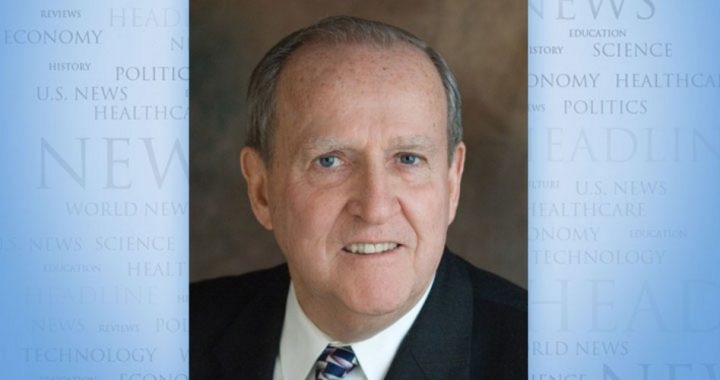
John Roberts grew up in Northern Indiana where he received early schooling at Catholic elementary and secondary institutions. Clarence Thomas grew up in Georgia where he, too, benefitted from primary and secondary lessons at Catholic elementary and secondary schools. Roberts then went on to Harvard University where he earned bachelor and law degrees. Thomas earned a bachelor’s degree at Holy Cross College and a law degree at Yale University.
Serving as Supreme Court Chief Justice for the past 15 years, Roberts has consistently been labeled a “conservative.” But he has frequently sided with the court’s pronounced liberals, even providing a decisive fifth vote on sensitive issues to the delight of America’s leftists. Thomas has always been the Court’s most reliably conservative standard bearer, a stance that upsets liberals both in government and the mass media. Harvard’s deserved reputation as a font of leftist leaning obviously influenced Roberts. Yale’s similar leftward leanings had next to no effect on Thomas, who emerged from its hallowed halls as a committed conservative.
Roberts regularly receives plaudits from the liberal mass media even while its unreliable propagandists continue potraying him as a right-winger. And Thomas continues causing the same media to wonder how the customarily reliable Yale Law School failed to steer one of its students into a leftward, even revolutionary, path. But let’s take a look at some of important decisions that show Roberts to be in the camp of the Left and Thomas his direct opposite.
We start with the truly mind-boggling 2012 ruling by Roberts when he approved ObamaCare by labeling its funding a tax. He joined with four Supreme Court liberals in approving the Affordable Care Act (long known as ObamaCare). His reasoning included insistence that “certain individuals pay a financial penalty for not obtaining health insurance. He added that “the Constitution permits” such a “tax.” Opponents rightly asked, “What’s next? Forcing Americans to buy broccoli?” Never before had the federal government required everyone to purchase a product or service. They also wondered where in the Constitution there is any grant of power to a president to meddle in the field of medicine. Such a ruling has no basis constitutional basis. But John Roberts and four liberal colleagues changed that with their 5-4 vote.
On June 27, 2019, the Supreme Court barred the Trump administration from including in the 2020 census a question about the citizenship of respondents. Explaining the thinking of the Court’s 5-4 majority opinion, Chief Justice Roberts avoided the fact that such a question had been asked in previous census takings and claimed that the question could not appear because the Commerce Department had failed to disclose the true reason for wanting to insert it, something not required in previous census takings.
On June 16, 2020, the Supreme Court handed the “gay rights” movement a huge victory by applying the 1964 Civil Rights Act regarding discrimination based on an employee’s sex to include homosexuality or transgenderism. Roberts sided with five colleagues in the 6-3 decision, and LGBTQ partisans cheered. A dissent issued by Justice Alito and joined by Justice Thomas held that the Court had actually broadened the meaning of the word ”sex” in the 1964 law by assuming power to “update” it according to “current values” possessed by a segment of society. The Alito-Thomas duo rightly held that such a tactic cannot be justified. Any change in the meaning of a word, they stated, should be made by a new law duly enacted by Congress, the legislative branch. What Roberts and his five colleagues had done far exceeded the powers of a Supreme Court, or any court.
On June 18, 2020, the Supreme Court blocked the Trump administration’s plan to scuttle the immigration process that has been protecting 700,000 illegal immigrants from deportation. Almost all of the illegals, called Dreamers, were children when they arrived in the United States, some as far back as 20 years ago. Relatives in foreign countries wanted the youngsters to become legally capable of sponsoring entry to the United States for family members. Roberts cast the deciding 5-4 vote of the Court and actually stated that he did so, not based on any federal law or portion of the Constitution, or even anything to do with immigration policy. He based his decision favoring legal acceptance of the 700,000 on his claim that the Trump adminstration had not provided “a reasoned explanation” for its desire to deport the lllegals. Leftist members of the Suoreme Court look forward to 700,000 more voters, most of whom would likely choose Democrat/leftist candidates in any election. This surely motivated some justices to vote for legitimizing lawbreaking immigrants who will be future voters. Yet John Roberts continued to receive the conservative label from most of the nation’s media.
On June 29, 2020, in another 5-4 decision with Roberts delivering the crucial fifth vote, the Supreme Court struck down a Louisiana law requiring doctors who perform abortions in that state to have admitting privileges at a nearby hospital, a step toward ensuring the safety of women who undergo the removal of the fetus they were carrying. The Louisiana law was almost identical to a Texas law that the Supreme Court voided in 2016. In that instance, Roberts had favored what was considered an anti-abortion stance. Abortion opponents hoped that the addition of two new conservative justices since 2016 (Gorsuch and Kavanaugh) would lead to approval of the Louisiana law and pave the way for a possible rehearing of the 1973 Roe v. Wade decision that opened the floodgates for widespread abortion. Texas Senator Ted Cruz angrily stated that Justice Roberts, who sided with the four liberal justices “had joined with abortion extremists that care more about providing abortion-on-demand than protecting women’s health.”
As the above Supreme Court rulings show, Justice Roberts does not deserve a conservative label. In numerous cases, he has sided with liberals, even provided them with a critical fifth vote. Justice Roberts is part of the Court’s liberal wing, not a member of the conservative minority. In case after case, Justice Thomas is a reliable conservative.
John F. McManus is president emeritus of The John Birch Society.



